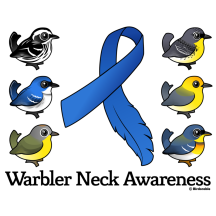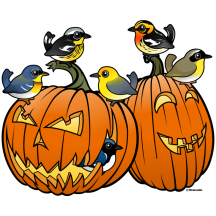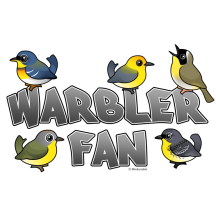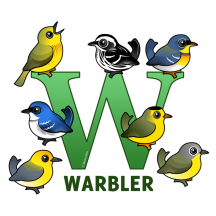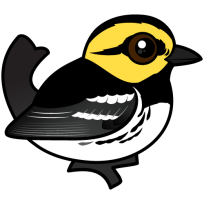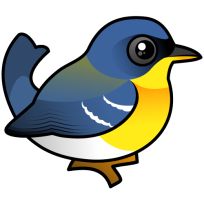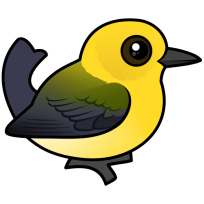Also known as: American Parula, Blue Yellow-backed Warber, Parula Warbler
The Northern Parula is a species of warbler that breeds in the eastern part of North America. These small migratory birds spend the winter in warm climates, from Florida down to Central America.
Male Northern Parulas have grey upperparts with yellow breasts. In the breeding season they also develop blue and rufous breast bands. Females are similar, but their colors are duller. Both have white eye-rings.
Northern Parulas feed on insects and spiders by foraging through foliage. During the winter they may supplement their diet with berries and other vegetation.
Added to Birdorable
Hatched November 17, 2010
アサギアメリカムシクイ (asagiamerikamushikui)




























